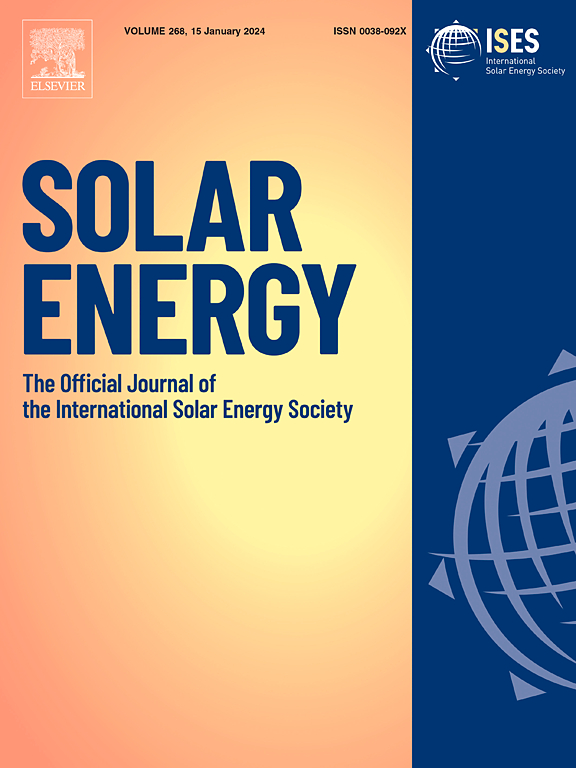基于太阳能光催化的有机污染物降解:ZnO/ fe2o3掺杂NiCo2O4双z方案动力学的机理理解
IF 6
2区 工程技术
Q2 ENERGY & FUELS
引用次数: 0
摘要
双z型光催化剂为增强光诱导载流子的分离和转移提供了有效的策略。本研究采用共沉淀法合成了纯NiCo2O4 (NC)和ZnO/ fe2o3掺杂的NiCo2O4 (ZNFC1-3)纳米粒子(NPs)。研究了掺杂对结构和光催化性能的影响。通过x射线衍射(XRD)、傅里叶变换红外光谱(FTIR)、拉曼光谱和紫外可见分析对NPs进行了表征。XRD证实ZNFC NPs具有面心立方结构,粒径在19 ~ 29 nm之间。FTIR分析确定了金属-氧键,验证了掺杂剂的成功掺入。NPs的光学带隙从2.68 eV(未掺杂)减小到1.64 eV(高掺杂),显示出增强的光吸收。光致发光(PL)强度随掺杂浓度的增加而降低,表明对载流子复合的抑制作用增强。考察了纯znnf3 NPs和掺杂znnf3 NPs在可见光下降解结晶紫(CV)染料和水杨酸(SA)的光催化性能。znnf3光催化剂表现出优异的降解效率,在pH、污染物浓度、催化剂用量等优化条件下,CV去除率达91%,SA去除率达90%。捕获实验证实,羟基自由基(OH•)是负责污染物降解的主要反应物质,其次是光诱导空穴和电子。多次循环的可回收性测试表明,znnf3光催化剂具有优异的稳定性和可重复使用性,使其成为去除废水中有机污染物的有希望的候选者。本文章由计算机程序翻译,如有差异,请以英文原文为准。
Solar light-based photocatalysis for organic pollutant degradation: Mechanistic understanding of double Z-scheme dynamics in ZnO/Fe2O3-doped NiCo2O4
The double Z-scheme photocatalysts provide an effective strategy for enhancing the separation and transfer of photo-induced charge carriers. In this study, pure NiCo2O4 (NC) and ZnO/Fe2O3-doped NiCo2O4 (ZNFC1-3) nanoparticles (NPs) were synthesized using the co-precipitation method. The impact of doping on the structural and photocatalytic properties was thoroughly investigated. The NPs were characterized through X-ray diffraction (XRD), Fourier-transform infrared (FTIR) spectroscopy, Raman spectroscopy, and UV–Visible analysis. XRD confirmed that the ZNFC NPs possess a face-centered cubic structure, with particle sizes ranging from 19 to 29 nm. FTIR analysis identified metal–oxygen bonds, validating the successful incorporation of dopants. The optical bandgap of the NPs decreased from 2.68 eV (undoped) to 1.64 eV (highly doped), demonstrating enhanced light absorption. Photoluminescence (PL) intensity decreased with increasing dopant concentrations, indicating improved inhibition of charge carrier recombination. The photocatalytic performance of the pure and doped ZNFC3 NPs was evaluated for the degradation of Crystal Violet (CV) dye and salicylic acid (SA) under visible light irradiation. The ZNFC3 photocatalyst exhibited superior degradation efficiency, achieving 91% removal of CV and 90% of SA under optimized conditions, including pH, pollutant concentration, and catalyst dosage. Trapping experiments confirmed that hydroxyl radicals (OH•) were the primary reactive species responsible for pollutant degradation, followed by photo-induced holes and electrons. Recyclability tests over multiple cycles demonstrated the excellent stability and reusability of the ZNFC3 photocatalyst, making it a promising candidate for removing organic pollutants from wastewater effluents.
求助全文
通过发布文献求助,成功后即可免费获取论文全文。
去求助
来源期刊

Solar Energy
工程技术-能源与燃料
CiteScore
13.90
自引率
9.00%
发文量
0
审稿时长
47 days
期刊介绍:
Solar Energy welcomes manuscripts presenting information not previously published in journals on any aspect of solar energy research, development, application, measurement or policy. The term "solar energy" in this context includes the indirect uses such as wind energy and biomass
 求助内容:
求助内容: 应助结果提醒方式:
应助结果提醒方式:


